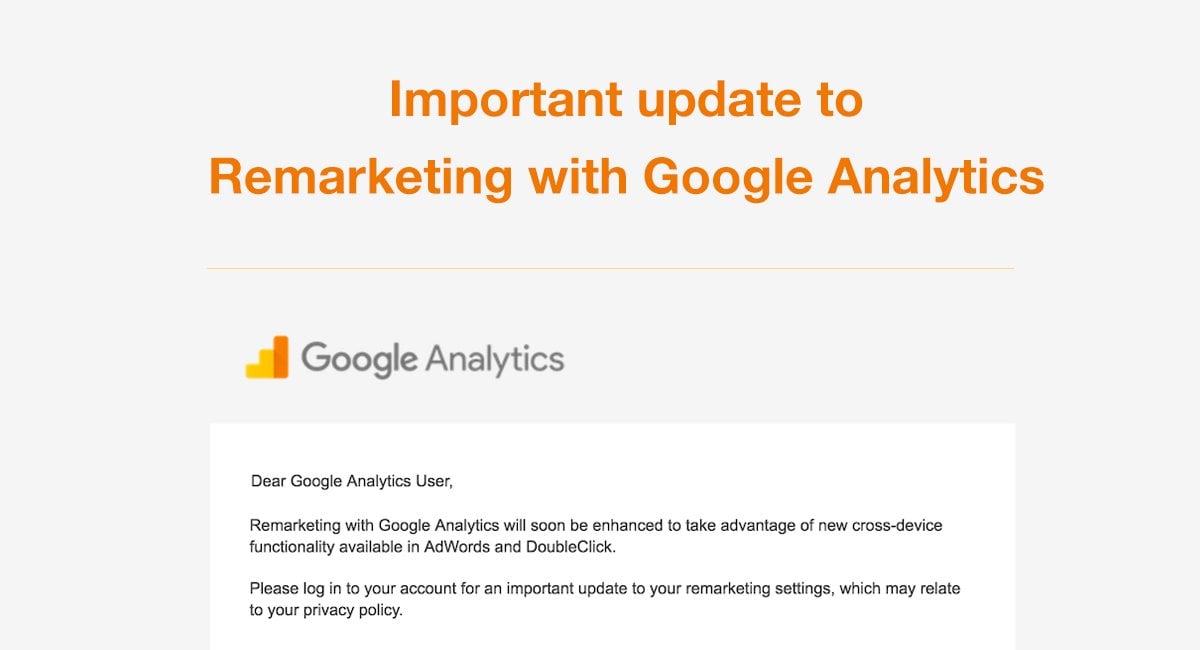Maximizing Your Campaigns with Remarketing In Google Analytics
Wiki Article
Optimize Your ROI With Remarketing in Google Analytics
By taking advantage of the power of individual data and customizing ads to details audience sectors, companies can dramatically magnify their conversion rates. The journey to optimizing ROI through remarketing is a nuanced course led with insights and chances that can improve the trajectory of your advertising undertakings.Understanding Remarketing in Google Analytics
Recognizing remarketing in Google Analytics is important for maximizing your digital advertising method. Remarketing allows you to target customers that have actually formerly visited your site or communicated with your application, providing them with tailored ads as they browse various other websites or make use of various other apps within the Google Present Network. This strategy helps keep your brand top of mind and encourages users to return to your website, inevitably enhancing the probability of conversion.By utilizing Google Analytics, you can track the efficiency of your remarketing campaigns, gaining important understandings into user actions, interaction, and conversions. This information allows you to fine-tune your targeting, bidding, and messaging techniques to enhance the general performance of your projects.
Furthermore, recognizing the various types of remarketing checklists offered in Google Analytics, such as common, vibrant, and similar target markets, permits you to create tailored and very fractional campaigns customized to certain individual sectors. This degree of granularity can dramatically enhance the relevance and effect of your remarketing efforts, ultimately maximizing your roi.
Establishing Remarketing Listings
To efficiently execute remarketing campaigns in Google Analytics, the initial step includes setting up and creating remarketing listings targeting specific customer sectors based upon their communications with your internet site or app. By establishing remarketing checklists, you can tailor your advertising initiatives to reach users that have actually already shown interest in your product and services.To begin, navigate to the Admin area of your Google Analytics account and choose the Property where you intend to create the remarketing list. Under the Home column, click on 'Target market Definitions' and select 'Target markets.' Next off, click on the red 'New Target market' switch and select 'Produce New' to define the criteria for your remarketing checklist.

Crafting Reliable Remarketing Advertisements

When crafting your advertisements, emphasis on developing attention-grabbing headlines and engaging visuals that attract attention to prospective consumers. Incorporate solid calls-to-action that motivate customers to review your site and complete a desired activity. Utilize dynamic remarketing to reveal tailored advertisements featuring services or products that customers have actually previously seen on your site.
Furthermore, make certain that your advertisements are mobile-friendly because a significant part of internet website traffic originates from smart phones. Test different advertisement variants to identify which messages and layouts drive the very best results. By continuously refining and maximizing your remarketing ads based on performance data, you can optimize their efficiency and boost your return on financial investment.
Analyzing Remarketing Performance

Via Google Analytics, marketing experts can track the efficiency of their remarketing projects in real-time, allowing them to recognize trends, patterns, and areas for renovation without delay. By assessing the information, marketing professionals can figure out which advertisements are performing well, which target market sectors are responding positively, and which networks are driving one of the most conversions. This level of granularity makes it possible for online marketers to make data-driven decisions to enhance their remarketing campaigns for better results.
Optimizing ROI With Remarketing
Examining remarketing data in Google Analytics allows marketing professionals to pinpoint possibilities for maximizing return on financial investment (ROI) via calculated adjustments - What Is “Remarketing” In Google Analytics?. To maximize ROI with remarketing, it is vital to recognize the actions of your audience. By evaluating individual communications, such go to website as the web pages they visited, the products they saw, or the activities they handled your website, you can customize your remarketing campaigns betterSegmenting your target market based on their actions permits you to produce customized and targeted advertisements that are most likely to reverberate with them. By showing appropriate advertisements to details sectors of your target market, you can raise the chances of conversion and ultimately boost your ROI.
Furthermore, checking various ad creatives, messaging, and deals can assist determine what resonates best with your audience. A/B testing enables you to try out various components of your advertisements to determine what drives the greatest engagement and conversion prices.
Verdict
Finally, making the most of ROI with remarketing in Google Analytics requires a critical strategy to analyzing customer actions, segmenting audiences, producing tailored ads, and optimizing project performance. By leveraging data-driven understandings and examining different techniques, companies can boost their remarketing initiatives to drive higher engagement and conversion rates. This systematic approach makes sure that resources are effectively designated towards this link maximizing rois in remarketing projects.Next off, click on the red 'New Target market' button and select 'Create New' to define the criteria for your remarketing listing.
By constantly refining and maximizing your remarketing ads based on efficiency data, you can maximize their efficiency and improve your return on financial investment.
By delving right into these understandings, marketing experts can gain a comprehensive understanding of exactly how their remarketing efforts are reverberating with their target audience and driving conversions. To make the most of ROI with remarketing, it is crucial to recognize the habits of your audience.In final thought, maximizing ROI with remarketing in Google Analytics requires a strategic approach to examining individual actions, segmenting audiences, creating tailored advertisements, and maximizing project efficiency.
Report this wiki page